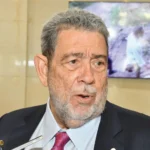The Transportation Safety Board of Canada (TSB) and US Coast Guard will both investigate the fatal implosion of a submersible carrying paying adventure tourists in the North Atlantic last week.
It is unclear whether the probes by the Transportation Safety Board of Canada and US Coast Guard would be one single investigation or two separate, simultaneous examinations. The US National Transportation Safety Board will assist the Coast Guard, the agency tweeted.
The submersible vessel was the property of OceanGate Expeditions, a U.S.-based company. Its support ship, Polar Prince, however, is a Canadian-flagged ship.
The announcements came as investigators continued to scour the ocean floor for any insight into the “catastrophic implosion” on the Titan submersible that suddenly lost communication with its mother ship, Polar Prince, last weekend, officials said.
The Polar Prince lost contact with the Titan an hour and 45 minutes after the submersible began its descent Sunday.
Responders rushed equipment to where remains of the Titan were foundabout 1,600 feet from the historic wreckage of the Titanic .
Five major fragments of the 6.7-meter Titan were located in the debris field left from its disintegration, including the vessel’s tail cone and two sections of the pressure hull, U.S. Coast Guard officials said.
No mention was made of whether human remains were sighted.
Military experts found the debris was consistent with the disastrous loss of the small vessel’s pressure chamber, US Coast Guard Rear Adm. John Mauger announced.
The passengers killed were a Pakistani businessman and his son, Shahzada and Suleman Dawood; British businessman Hamish Harding; French diver Paul-Henri Nargeolet; and Stockton Rush, the CEO of the vessel’s operator, OceanGate Expeditions.
As officials work to determine the timeline and circumstances of the accident, remotely operated vehicles will be used to map out the Titan’s debris field more than 2 miles deep in the North Atlantic Ocean, Mauger said.
A new, second mission of the Odysseus 6K ROV began late Friday morning to continue searching and mapping efforts, Jeff Mahoney, spokesperson for Pelagic Research Services, told CNN.
Any attempts to recover anything from the debris field will require a larger operation together with Deep Energy, another company assisting with the operation, because the debris will likely be too heavy for Pelagic’s ROV to lift by itself, Mahoney said. The recovery efforts would include using rigged cabling to pull up any debris.
Remotely Operated Vehicle (ROV) operations are expected to continue for about another week, according to Mahoney.










